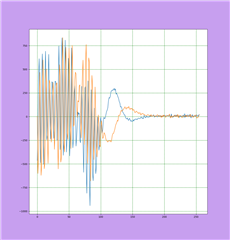Other Parts Discussed in Thread: TDA2
Hi, TI team!
We trying to run a full bandwidth configuration (4 GHz) but data fade. I guess it happens while signal frequency grows upper then 78 GHz. Here is a datagram.

We've set VCO2 via pfVcoSelect and used internal VCO selection but picture is the same. VCO2 selection was confirmed with rlGetProfileConfig.
Seams that pfVcoSelect has no effect. Also we've run configuration with frequency sweep from 79 GHz to 81 GHz (VCO2 have been set, forced external selection) and recieved only noise, there have been no data at all.
Configurations with bandwidth corresponding to VCO1 band run faultlessly. We use custom board and custom application (TDA2 + AWR1243Px4).
Can you suggest a possible reason of such behavior?
Thank you
Timur Suanov

